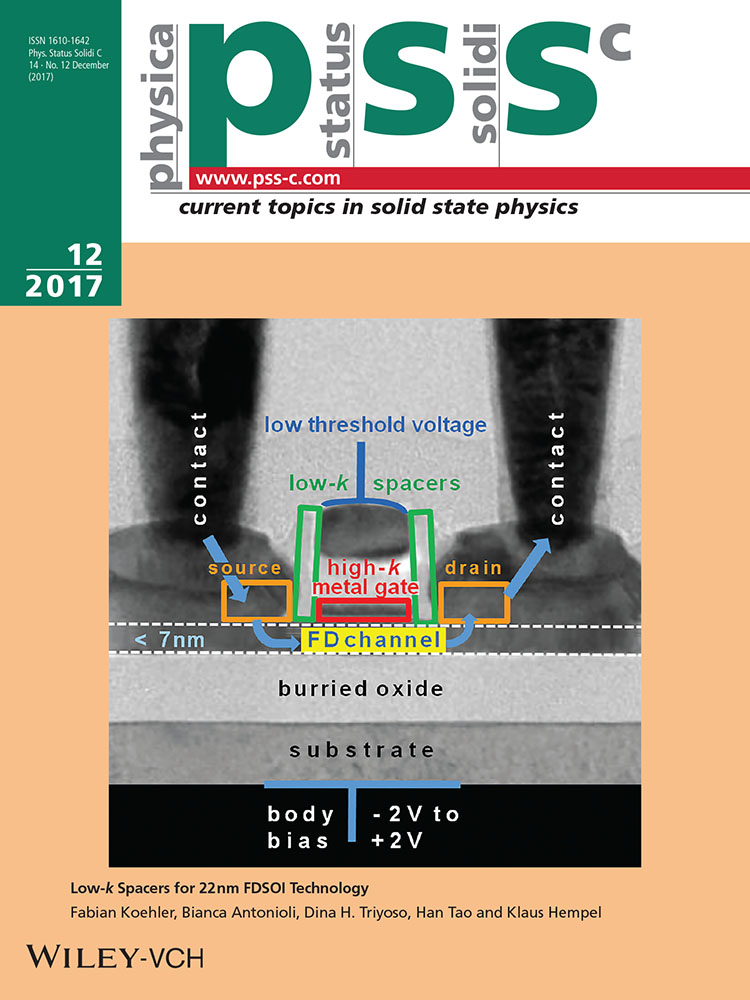Radiation-induced defects and their transformations in oxygen-rich germanium crystals
Abstract
Defects induced by irradiation with fast electrons and 60Co gamma-rays in oxygen-rich Ge crystals have been studied by means of infrared absorption, deep level transient spectroscopy (DLTS) and Hall effect measurements. It is found that the vacancy–oxygen (V–O) complex in Ge has three charge states (doubly negative, singly negative and neutral ones) and two corresponding energy levels in the gap at about Ec – 0.21 eV and Ev + 0.27 eV. Three absorption bands at 621.4, 669.1 and 716.2 cm–1 are identified as oxygen-related asymmetrical stretching vibrations for the neutral, singly negatively charged and doubly negatively charged states of the V–O complex, respectively.




